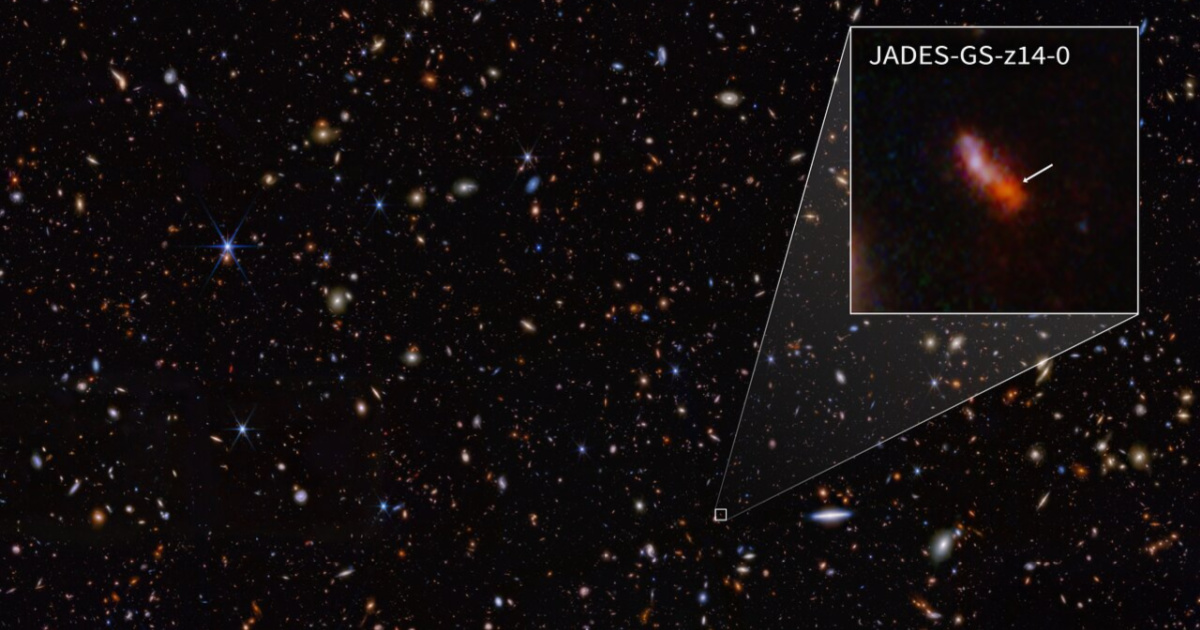
Space agencies around the world keep building better and better telescopes that can see farther and farther into the universe.
The images it captures are stunning and truly challenge our concept of what’s out there, what’s possible.
This new galaxy, the deepest in space we’ve seen yet, is no exception.
Okay, there are actually two galaxies – JADES-GS-Z14-0 and JADES-GS-Z14-1 – which were born around 300 million years after the Big Bang.
Discovered by scientists using the James Webb, their characteristics and evolution are detailed in three new papers, none of which have been peer reviewed at this point.
JADES-GS-Z14-0 is both bigger and brighter, as well as the more distant, says one of the study’s lead authors, astronomer Daniel Eisenstein.
“The size of the galaxy clearly proves that most of the light is being produced by large numbers of young stars, rather than material falling onto a supermassive black hole in the galaxy’s center, which would appear much smaller.”
The study reveals that the galaxies formed relatively quickly in the early years of the universe, and lead author Stefano Carniani thinks it’s a huge deal.
“JADES-GS-Z14-0 now becomes the archetype of this phenomenon. It is stunning that the universe can make such a galaxy in only 300 million years.”
The team wants to get another chance to use the James Webb, because there’s more to see back in the early years of the universe. This phase is characterized by dense clouds of gas collapsing under their own gravity and becoming hot enough to kickstart nuclear fusion, becoming the first stars.
“Despite being so young, the galaxy is already hard at work creating the elements familiar to us on Earth.”
The authors believe that a better understanding of how the universe came into existence could lead to a better understanding of how it might end.
Even if we’re not going to be around to see it.
If you thought that was interesting, you might like to read about the mysterious “pyramids” discovered in Antarctica. What are they?